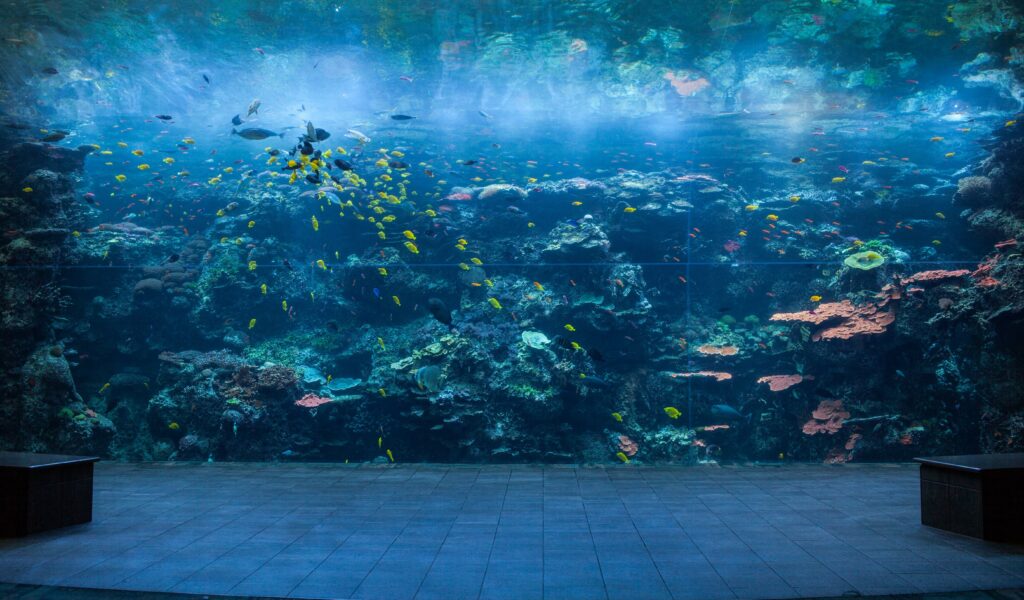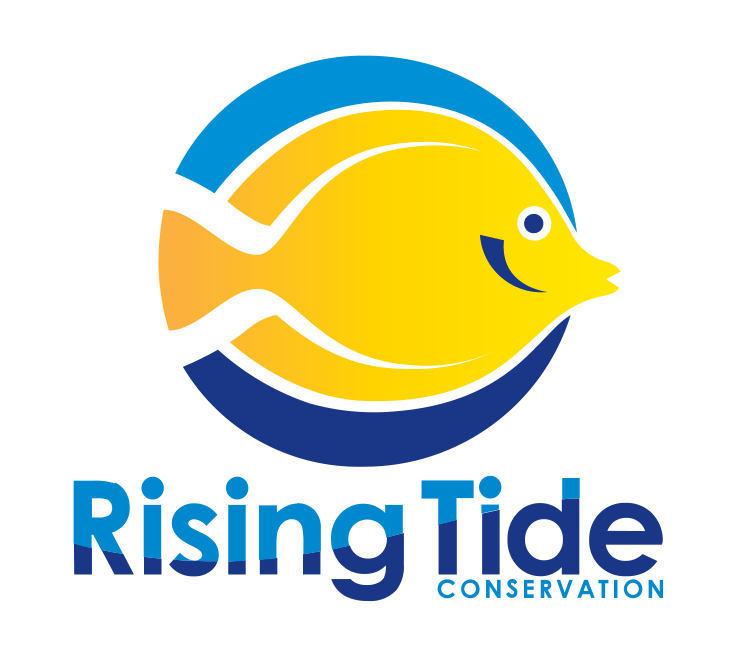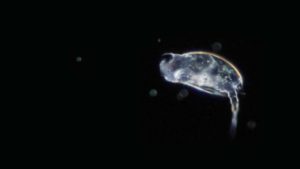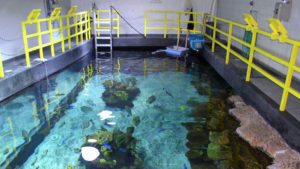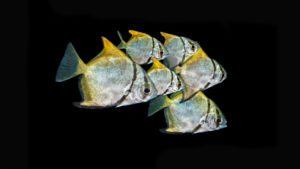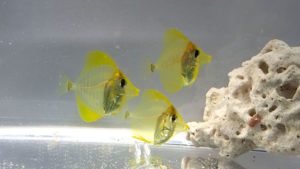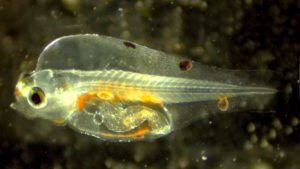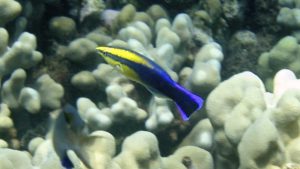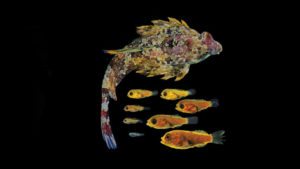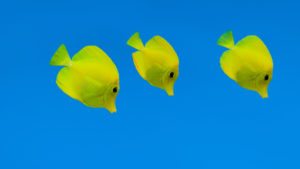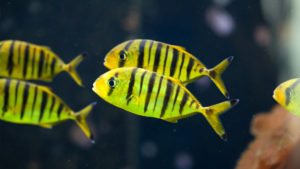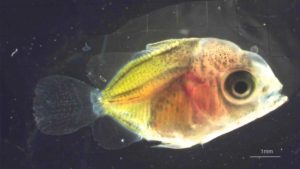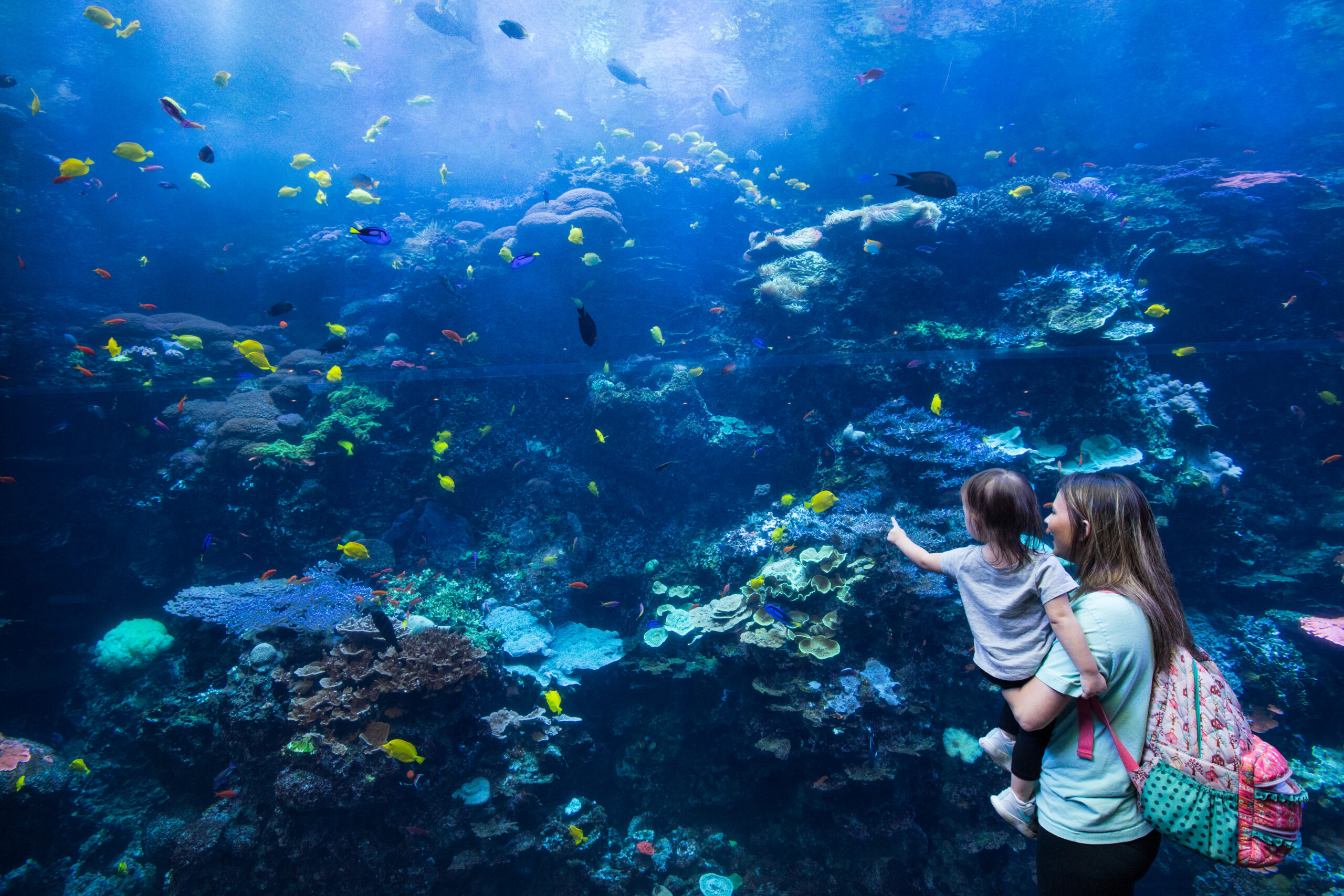
Rising Tide Conservation’s mission is dedicated to developing and promoting aquaculture of marine ornamental fish species through the collaborative efforts of researchers, public aquaria, hobbyists, pet industry professionals, and conservation groups. In pursuit of this mission, Rising Tide writer, Grace Sowaske, digitally interviewed Dana Welker who is currently a senior aquarist at Georgia Aquarium developing an onsite marine ornamental aquaculture program. In this interview Dana discusses the inception and status of her square spot anthias (Pseudanthias pleurotaenia) aquaculture efforts and her plans for the future.
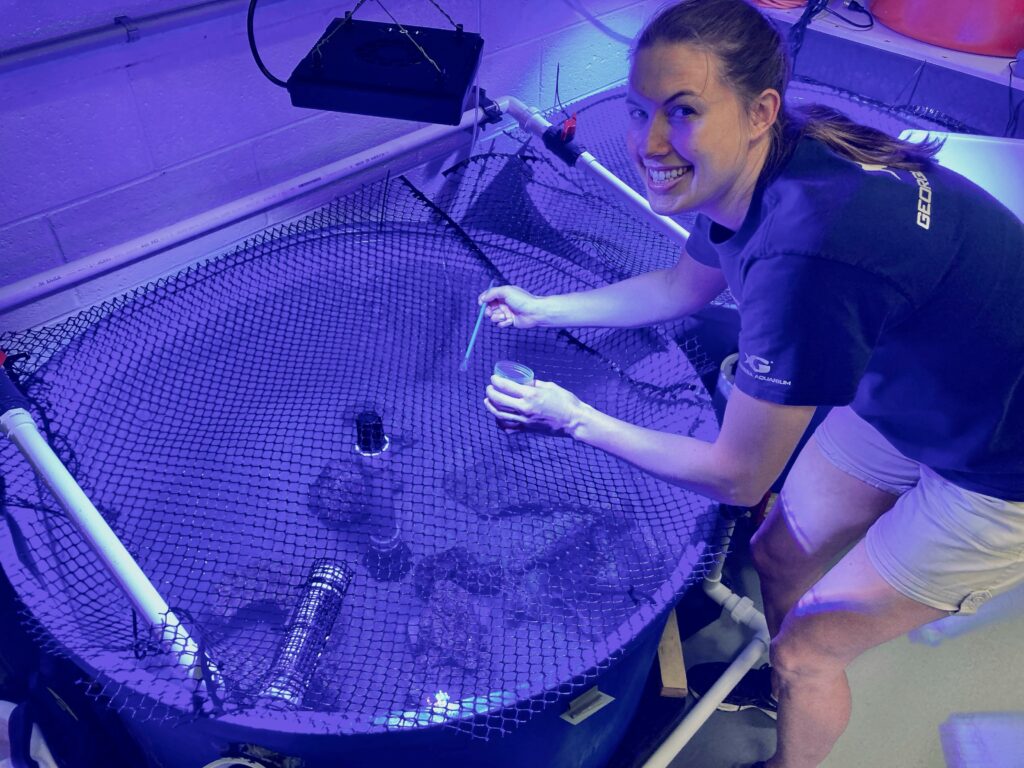
Grace Sowaske (GS): Tell us a bit about yourself and your involvement at Georgia Aquarium.
Dana Welker (DW): I have a degree from the University of North Carolina in Environmental Science with a focus in Marine Science. I am a senior aquarist at Georgia Aquarium and have worked here for almost 8 years! During that period, I have worked with every animal you can imagine; Great Hammerhead Sharks, Bowmouth Guitarfish, Longhorn Cowfish, American Alligators, Rosy Sand Boa, the list goes on. I made my TV debut in an episode of The Aquarium, where we moved two of our sub-adult Black Blotched rays from our holding facility to Ocean Voyager. My personal favorite success was successfully rearing several groups of Elacatinus horsti from eggs to adults that are now displayed at Georgia Aquarium.
Why is Georgia Aquarium interested in marine ornamental aquaculture on site?
Conservation, sustainability, and preservation are key actions Georgia Aquarium strives for. Aquaculturing marine ornamental fishes in house achieves all of these goals.
We have many exhibits filled with marine ornamentals. How great would it be to tell our guests that we cultured these fish in-house or show Georgia Aquarium’s support for aquaculture programs by only displaying aquacultured fish in our exhibits?
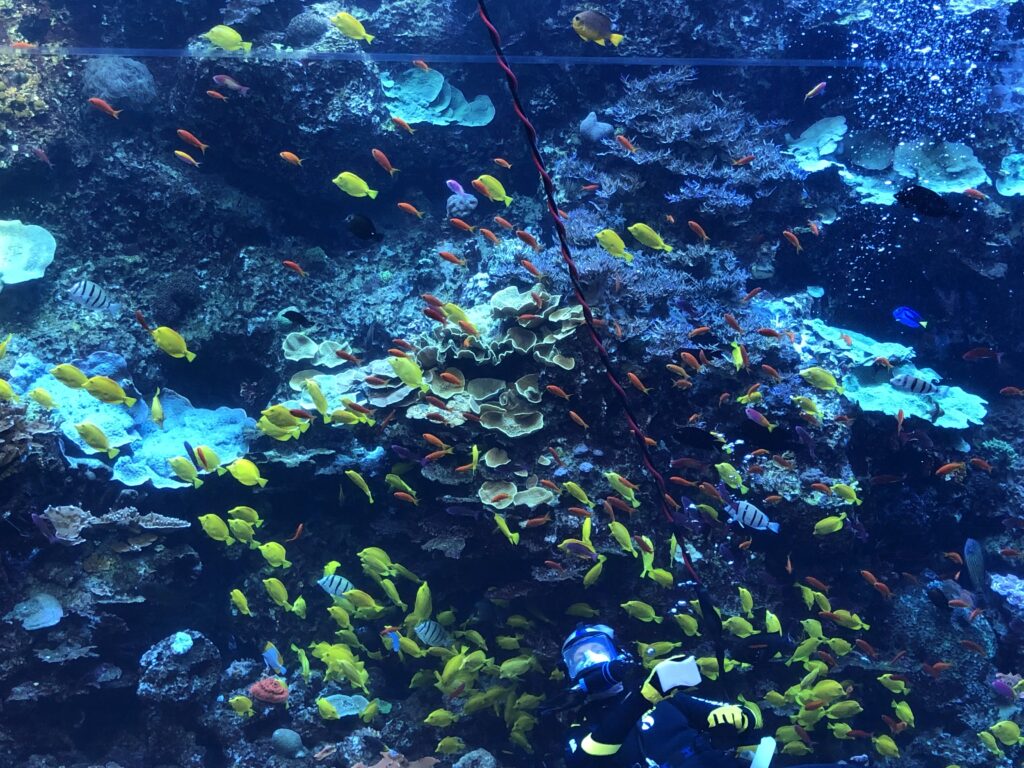
What are the key benefits of breeding fish onsite?
Knowing where your fish are collected and how they are collected are an important part of finding sustainable fish sources. By breeding fish in-house we know the history of each fish.
What fish species are you currently working with?
I am hoping to culture the square spot anthias (Pseudanthias pleurotaenia). I am currently working with a group of 6 sub-adult anthias broodstock. They are housed in 2 glass aquarium tanks equipped with reef lights. These lights are programmed with a moon cycle and I am also fluctuating the temperature to mimic seasonality.
Read more about this fish species at Georgia Aquarium’s Animal Guide: https://www.georgiaaquarium.org/animal/squarespot-anthias/
What stage of this project are you in?
Square spot anthias are sequential hermaphrodites that transition from female to male and right now, I am waiting for one of the broodstock females to fully transition into a male. I currently have one fish that appears to have some slight color changes and its fins are starting to elongate. I hope within the next couple months they will all reach breeding age and we will start to collect eggs.
Why are you working with square spot anthias?
I mean why not? They are beautiful, colorful, interesting, little fish! They also happen to be one of the most popular fishes found in home aquariums. Georgia Aquarium currently has a really large coral reef display that is filled with anthias. It would be amazing to continue to keep that exhibit full of fish that we have aquacultured in-house.
What is your current or ongoing pairing plan for these groups?
Right now I have 6 females. One might be in the process of transitioning. Every few months I try changing up the groups within our two broodstock tanks to see if there are any behavioral changes. Currently I have 3 females and the potential male in one tank and in the second tank, I have 2 females which includes my most timid anthias individual.
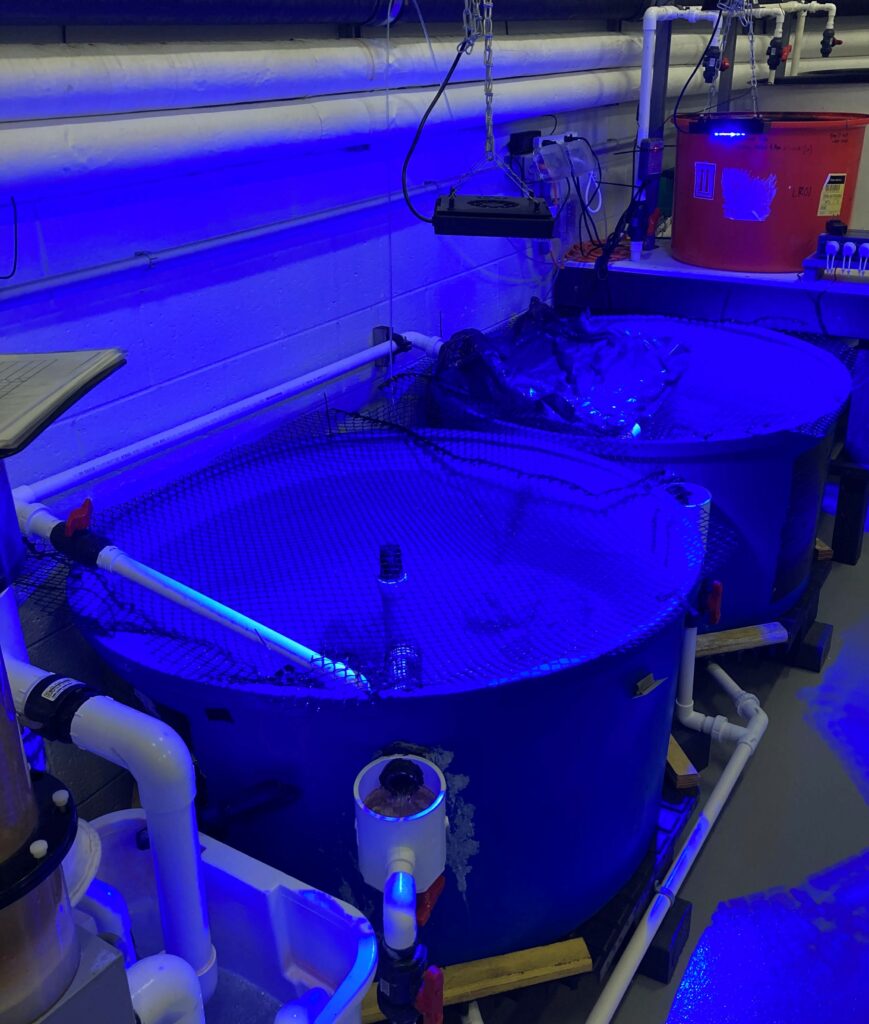
Have you recorded any spawning events or behavioral changes?
I have had one female swell up, potentially with eggs, for a few days with no change in body size. I increased the temp by 1F. Overnight, she reduced back to normal size, so I can only predict that she released her eggs overnight. This has been the only physical change I have noticed. The reef lights on the tanks do mimic what is happening with the moon cycle and I have read anthias do not spawn around new moons. As the fish get bigger and closer to breeding age, I will start paying closer attention to potential spawning events. Right now I am just waiting for them to get bigger and sexually mature.
How many staff members are dedicated to this project?
Just me! This is a small scale pilot project, which will scale up when we are successful with spawning and larval rearing!
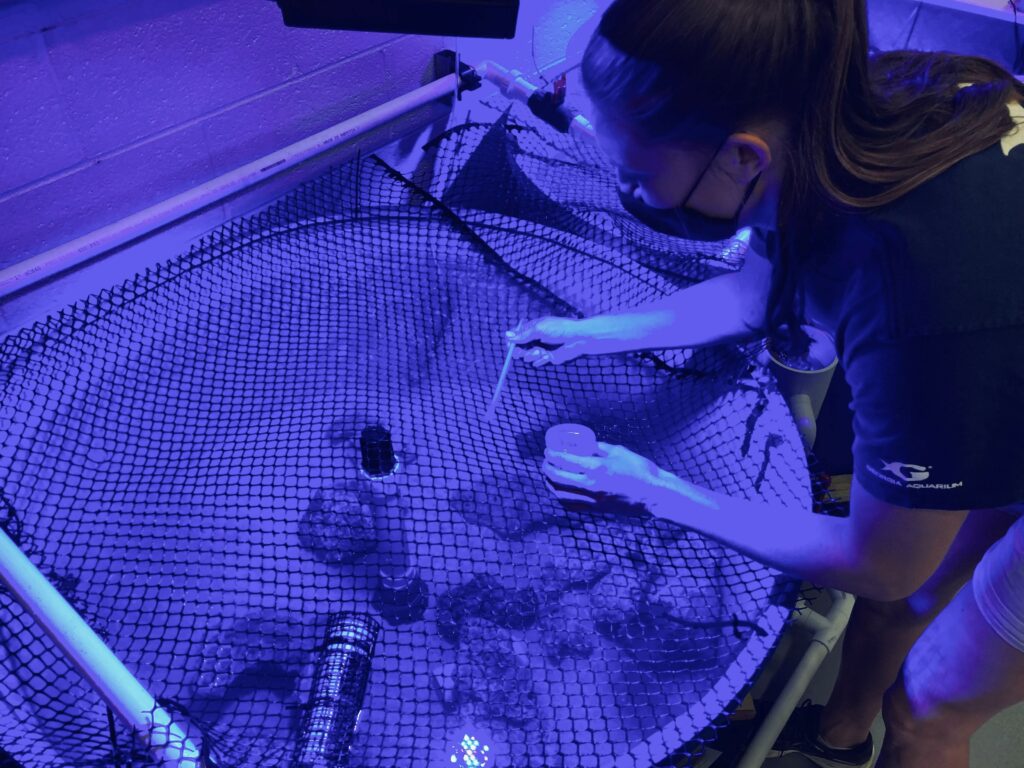
What live feed organisms are you culturing?
We are currently producing T.Isochrysis and Tetraselmis algae, Oithona colcarva copepods, S-Type rotifers, along with 24 and 48 hour artemia. We currently provide the artemia to our broodstock, with the other cultures maintained in preparation for when we start to see eggs and larvae. The rotifers and artemia are enriched with extra algae leftover from feeding the copepod cultures.
Are there any larval rearing areas set up already? Has the project reached this stage?
About two years ago I took an educational trip to the University of Florida, Tropical Aquaculture Lab to learn more about the best way to set up a successful larval rearing system, learn more about algae, copepod and larviculture techniques from then RTC graduate student, Grace Sowaske and TAL staff biologists. I then built a smaller scale replica of their larval rearing tanks at our offsite Animal Care Facility during the pandemic, before we had the broodstock. The larval rearing setup is pictured below and consists of three, 25 gallon round fiberglass tanks with a black interior. So far, we have used the larval rearing tanks to rear gobies, and I plan to use this setup when the anthias start spawning.
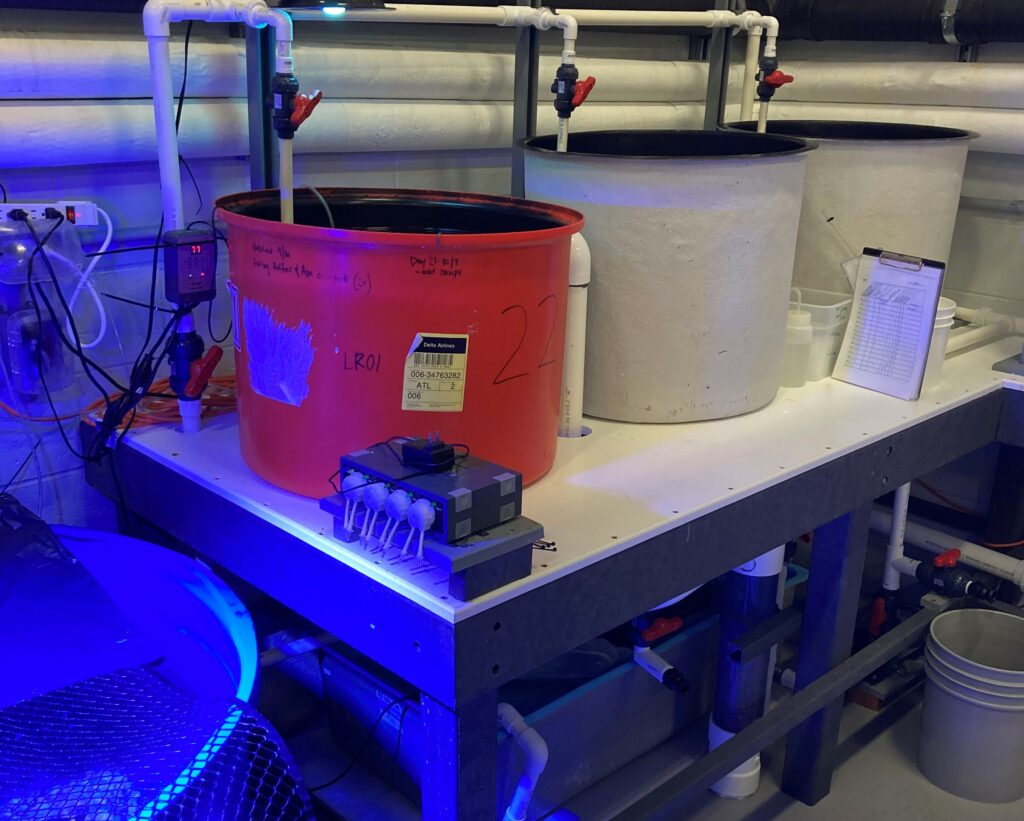
What are your future goals for this project?
I would love to expand the number of broodstock and larval rearing tanks. There are many species other than square spot anthias that would be cool to try and culture. We are producing enough algae right now for our small-scale aquaculture project, but I would love to scale up the amount we are culturing.
I would like to culture other copepod species such as Parvocalanus crassirostris. I would also like to start culturing diatoms in the future. We have never attempted culturing diatoms and I know they can be tricky but I am up for the challenge.
My team is planning to collaborate with the other onsite aquarist teams to start collecting eggs out of Georgia Aquarium’s many reef exhibits like our Indo-Pacific reef exhibit pictured below. The eggs we collect will be a hodgepodge of eggs, but will be really fascinating to see what we can collect, and what fish species we can successfully culture!
